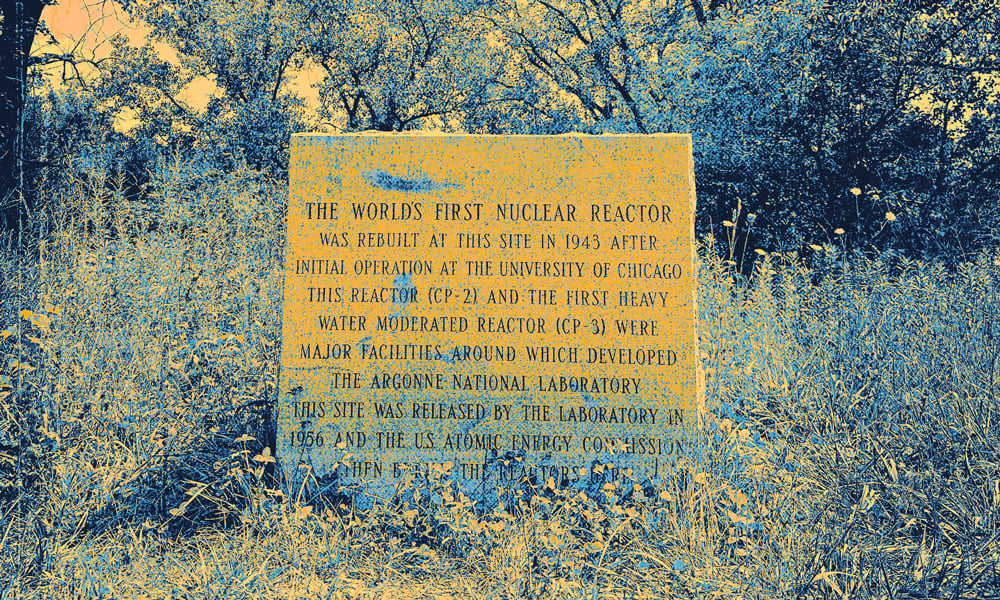The Mystery:
Why is the world’s first nuclear reactor buried in a forest preserve?


Why is the world’s first nuclear reactor buried in a Cook County forest preserve? Geoffrey Baer investigates with the help of Jessica Mlinaric.
Just southwest of Chicago in the Red Gate Woods forest preserve, a warning carved into a granite block reads, “Caution – Do not dig. Buried in this area is radioactive material from nuclear research conducted here 1943-1949.” That material came from the first-ever self-sustaining nuclear reaction, which took place at the University of Chicago under the bleachers at the abandoned Stagg Field in 1942. It was all part of the top-secret Manhattan Project to create the world’s first nuclear weapon. Stagg Field was just a temporary home, however. A labor strike had delayed the completion of a secret facility, called “Site A,” in the woods (later called Red Gate Woods), meaning the scientists conducted their highly sensitive, dangerous research in the dense, urban neighborhood of Hyde Park. Once Site A was completed in 1943, scientists moved the facility, as well as the first reactor called Chicago Pile-1, to the woods. After the war, the lab once again moved to a site 10 minutes away and became Argonne National Laboratory. Site A was decommissioned in the 1950s. “And what did they do with all the nuclear stuff they had sitting around?” author Jessica Mlinaric asked Geoffrey Baer. “Took it out in the woods and buried it.” But fear not, bird watchers, dog walkers, and picnickers: although some radiation was detected in later years, the site has since been cleaned and the woods are safe to explore today.



